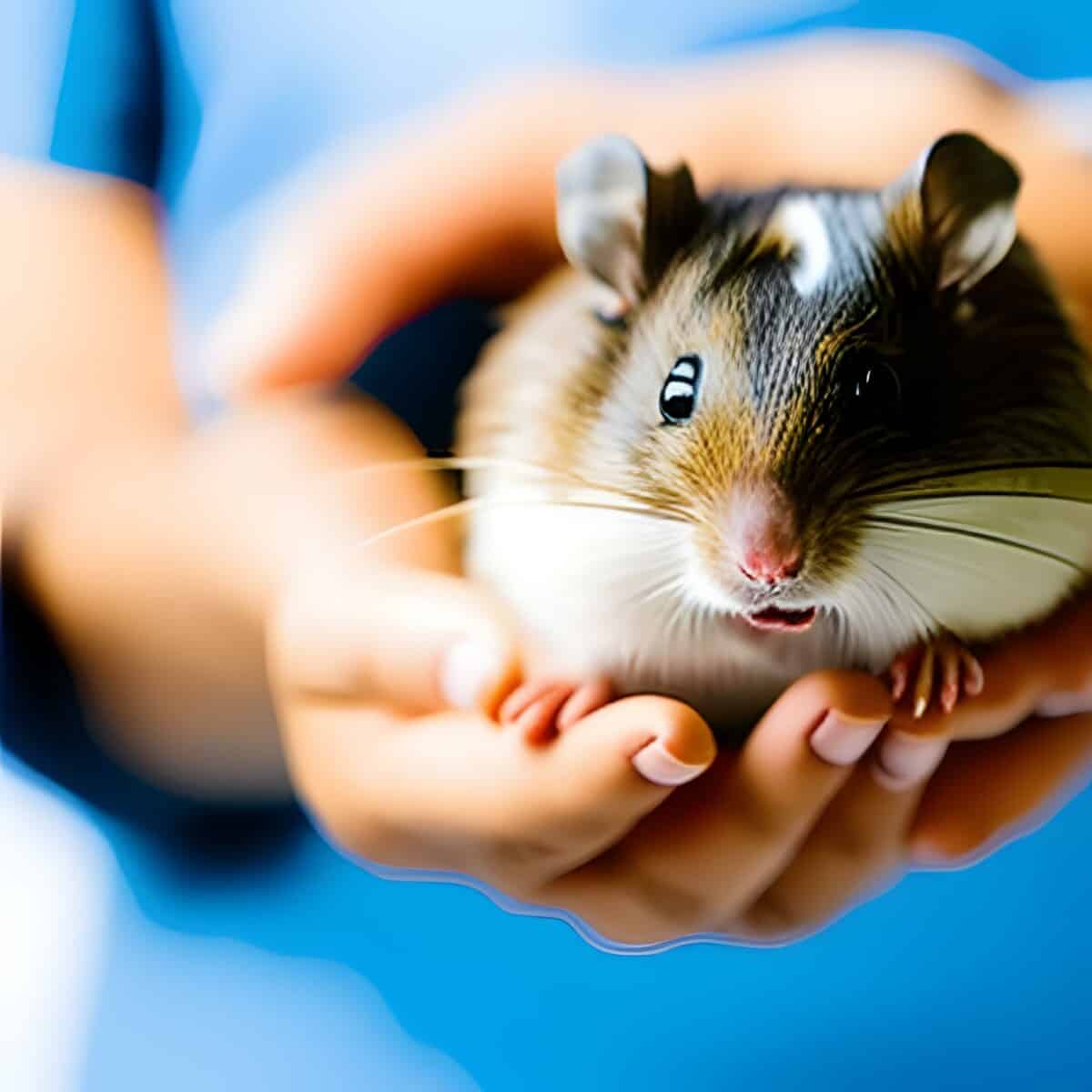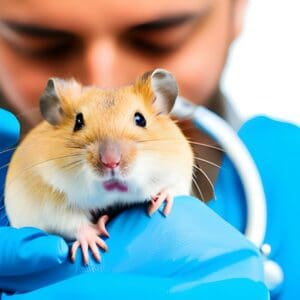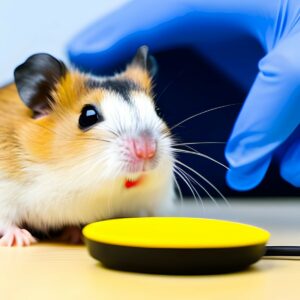Wet tail is a serious disease in hamsters, especially young ones.
Hamsters purchased from breeders and pet stores can be more susceptible to wet tail due to stress, poor hygiene, overcrowded living conditions, transportation, handling, and changes in the environment.
While it is rare for hamsters who live in safe and healthy environments to get wet tail, bacterial infections can’t always be controlled which is why wet tail is something every hamster owner should be aware of; even senior hamsters, senor rodents can be affected.
In this article, we will explore Wet Tail Disease, what causes it, its symptoms and diagnosis, how to prevent it, and what treatment options are available.
So, let’s get started!
Wet Tail Disease in Hamsters: Table of Contents
What is Wet Tail Disease?
Wet Tail Disease (proliferative ileitis) is a bacterial infection that leads to inflammation and ulceration of the intestine, diarrhea, dehydration, and in severe cases – death.
It is sometimes confusing for hamster owners to understand the primary cause of wet tail because stress and bacterial infection are used interchangeably.
So is it stress or bacteria?
Stress weakens the immune system in hamsters which then leads to bacteria overgrowth.
The combination of both factors causes gastrointestinal problems that then lead to dehydration and more severe health issues.
The wet tail disease can be extremely severe and life-threatening for hamsters. Without treatment, the animal can succumb to the disease within 48-72 hours.
The most notable symptom of the wet tail disease is severe diarrhea, resulting in a wet and soiled appearance around the hamster’s backside.
Early recognition of symptoms and immediate veterinary care are crucial to prevent dehydration, control bacterial infection, and provide supportive care to increase the hamster’s chances of survival.
Causes of Wet Tail Disease
The most common cause of Wet Tail Disease is stress.
Stress can weaken a hamster’s immune system, making it more vulnerable to bacterial infections.
When the immune system is weakened bacterias Lawsonia intracellularis, Campylobacter jejuni, and E. coli overpopulate and cause gastrointestinal issues.
Stressful situations for a hamster include:
- change in environment
- overcrowding
- sudden changes in diet
- dirty living conditions
Hamsters often experience multiple stressful events, such as moving from a breeder or vendor to a pet store and then to a new home. These stressful transitions can lead to bacterial overpopulation in the gut, increasing the risk of wet tail.
Other factors that can contribute to Wet Tail Disease include:
- weakened immune system due to malnutrition
- exposure to other infected animals
- history of digestive issues
- genetics
Wet Tail Symptoms and Diagnosis
The first sign that your hamster may have Wet Tail Disease is diarrhea.
The feces will be loose, watery, and may have a foul odor.
Your hamster may also appear lethargic and may not be interested in food or water.
Other symptoms include:
- wet and soiled bottom
- unkempt fur
- hunched posture
- rapid weight loss
- fatigue
- abdominal pain
The diagnosis of Wet Tail Disease is made by evaluating your hamster’s symptoms and medical history, as well as testing a stool sample for bacteria.
If your hamster is diagnosed with Wet Tail Disease, treatment is necessary to increase the chances of recovery.
Wet Tail Treatment
Treatment for Wet Tail Disease typically involves antibiotics to target the bacterial infection, as well as supportive care to manage symptoms such as dehydration and diarrhea.
Your veterinarian may also recommend changes to your hamster’s diet or living conditions to help prevent future infections.
The primary goals of treatment for wet tail disease in hamsters are rehydration, control of bacterial infection, and supportive care.
Oral rehydration solutions, which contain water, glucose, sodium, and potassium, are commonly used for rehydration in cases of mild to moderate dehydration
It is important to isolate infected hamsters to prevent the spread of wet tail disease.
Wet Tail Prevention
To prevent Wet Tail Disease you need to provide:
- Clean and stress-free environment for your hamster
- Regular cage cleaning
- Balanced nutrition
This includes regularly cleaning their cage, providing fresh water and food daily, and avoiding overcrowding.
Providing your hamster with a balanced and nutritious diet and care can help support their immune system and reduce the risk of infection.
Wt Tail Home care
To help the recovery process your vet will guide you through some home care tips.
These include:
- Hamster isolation: if you have more hamsters, other animals, or an overly stimulating environment in any other way (children for example) make sure your hamster has a stress-free, comfortable environment to rest.
- Hygiene: Clean the hamster’s cage and provide fresh bedding regularly to minimize bacterial growth. Clean and disinfect water bottles, food bowls, and any accessories in the cage to prevent contamination.
- Easily digestible food: remove fruits and vegetables from the hamster’s diet. Stick to their regular hamster pellets or food mix. Make sure you follow your vet’s advice as we are not aware of your hamster’s overall clinical image and can only offer general advice.
- Keep the hamster hydrated: Dehydration is a common concern with wet tail, offer fresh water and monitor their water intake. If the hamster is not drinking, a veterinarian may administer subcutaneous fluids.
Hamster Wet Tail Survival Rate
The average survival rate is estimated to be around 10%.
If left untreated, a hamster with a wet tail can die within 48-72 hours.
The mortality rate of wet tail is reported to be as high as 90%.
Immediate veterinary treatment for a hamster with a wet tail gives the highest chance of survival.
How Long Does Wet Tail Disease Last?
The average treatment is two weeks, however, your vet will decide if it should administer treatment longer based on your hamster’s condition.
The length of Wet Tail Disease depends on the severity of the disease and how quickly treatment is administered.
If caught early and treated, many hamsters can recover within a few days. However, the recovery process can take longer if the disease has progressed and caused more severe symptoms.
Vet Q&A
Q: Is my hamster in pain with wet tail?
A: Yes, gastrointestinal issues can cause pain, hamsters are often hunched.
Q: Is wet tail in hamsters contagious to humans?
A: Wet tail can cause some stomach issues in humans but this is quite rare. Best is to handle the affected hamster with gloves.
Q: Can wet tail affect all types of hamsters?
A: Wet tail can affect hamsters of any breed, but it is most commonly seen in Syrian hamsters under 12 weeks of age. It is less common in Roborovski dwarf hamsters.
Q; Is wet tail contagious to other hamsters?
A: Yes, the wet tail is highly contagious among hamsters. It can be transmitted through contact with the bacteria present in the feces of an infected hamster. It is important to isolate sick hamsters and practice good hygiene to prevent the spread of the disease.
My Senior Paws is a participant in the Amazon Services LLC Associates Program, an affiliate advertising program designed to provide a means for sites to earn advertising fees by advertising and linking to Amazon.com. We also participate in other affiliate programs which compensate us for referring traffic.




